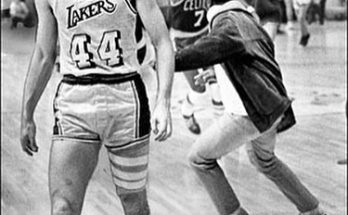New Book Unveils the Captivating Legacy of Kentucky Basketball: A Deep Dive into the History of a Storied Institution
A new book is making waves across the Bluegrass State and beyond, offering a powerful, in-depth chronicle of one of college basketball’s most revered programs — the University of Kentucky Wildcats. This freshly published volume doesn’t just relive the highlights of championship runs and iconic players; it unearths the rich, layered history of Kentucky basketball, a true American institution, and brings to life the stories, triumphs, heartbreaks, and cultural impact that have defined the program for over a century.
This is not just another sports biography or glossy highlight reel. It is a definitive account, a labor of love and scholarship, woven together by an author with a deep reverence for the program and a journalist’s attention to detail. Through exhaustive research, archival materials, firsthand interviews, and previously untold anecdotes, the book paints a full portrait of Kentucky basketball — not only what it has meant on the court but what it has stood for in the hearts of fans, athletes, and communities over decades.
Kentucky basketball is far more than wins and losses. It is a cultural phenomenon that has shaped the identity of a state and captured the imagination of the nation. From the early days of playing in packed gymnasiums with no air conditioning to cutting down nets in national championship arenas, the program’s journey mirrors the evolution of college basketball itself. This new book tracks that journey with remarkable clarity, documenting every major era from Adolph Rupp’s dynasties through Joe B. Hall, Rick Pitino, Tubby Smith, John Calipari, and into the current era.
One of the book’s greatest strengths lies in its ability to connect eras and explain the broader context in which Kentucky basketball evolved. It takes readers back to the 1940s, when Rupp’s disciplined and often dominant teams introduced the nation to a new standard of basketball excellence. It traces the transition into the post-Rupp years, with Joe B. Hall stepping out of his mentor’s enormous shadow to guide the Wildcats to a national title of his own in 1978. The book doesn’t flinch from addressing the challenges and controversies that accompanied the program either, including NCAA sanctions, the emotional toll of underperformance, and the ever-intensifying pressure of living up to sky-high expectations.
Readers will also find themselves immersed in the electric atmosphere of Rupp Arena, arguably the most iconic venue in college basketball. The book vividly describes unforgettable nights when the rafters shook, when underdogs rose up, and when legends were born. With detailed accounts of unforgettable games, clutch performances, and season-defining moments, it reminds readers why Kentucky basketball is not just followed — it is lived, breathed, and felt on a deeply emotional level by Big Blue Nation.
The players, of course, are central to this narrative. The book brings to life the stories of the all-time greats — Dan Issel, Jamal Mashburn, Tony Delk, Tayshaun Prince, Anthony Davis, and countless others who donned the Kentucky jersey and became part of a larger-than-life legacy. Yet it also makes space for the role players, the unsung heroes, the practice squad legends, and the players whose stories may not be captured in highlight reels but who made lasting contributions to the culture of the program. Their inclusion adds depth and humanity to the narrative, making this book not just a celebration of fame but a tribute to the collective spirit of the team.
Crucially, the book also tackles how Kentucky basketball intersects with social and cultural history. From racial integration to the rise of television, from Title IX to NIL, the Wildcats’ story is told against the backdrop of major societal changes that shaped the landscape of American sports and education. It highlights trailblazing players and coaches who broke barriers, endured criticism, and changed the game — not just on the scoreboard, but in the ways people viewed sports, equality, and opportunity.
The author’s prose is detailed yet accessible, reverent without being blind, and passionate without losing objectivity. It’s clear that every page was written with the care of someone who understands what Kentucky basketball means — not just in Lexington, but to the millions of fans who pack arenas, tune in from across the globe, and pass down their love for the Wildcats from one generation to the next.
What also stands out is the book’s attention to fan culture. It includes moving accounts of lifelong season ticket holders, students who camp outside Rupp Arena for days just to get a glimpse of their team, families who plan weddings and vacations around the basketball schedule, and fans who have never missed a game in decades. This emotional layer adds a level of intimacy and community to the book that few sports histories achieve. Kentucky basketball, it argues persuasively, is not just a team — it is a shared identity, a unifying force that connects strangers and communities with a common voice.
As the University of Kentucky turns its eyes to the future with a fresh coaching regime and a roster full of potential, this book arrives at a pivotal moment. It serves not only as a reminder of the greatness that has come before, but as a foundational piece that can help chart where the program is going. For younger fans who may not have lived through the highs of the 1996 championship team or the heartbreaks of the early exits in the 2000s, this book offers insight into the roots of the fandom they now carry forward. For longtime fans, it offers a chance to relive their favorite moments and understand how each thread ties into a larger, enduring tapestry.
Already being praised in early reviews for its depth and storytelling, the book is being hailed as a must-read not only for fans of the Wildcats but for anyone interested in the history and culture of American sports. Libraries, sports archives, and even college classrooms are beginning to adopt it as a text worth studying — not just for its athletic content, but for its reflection on tradition, perseverance, identity, and change.
The release of the book has also sparked events across Kentucky, including signings, readings, and panel discussions with former players, coaches, and fans. These gatherings have become celebratory reunions of sorts — a reminder that Kentucky basketball is more than what happens between the lines. It’s a community built on memory, loyalty, and love. The book has become a conversation starter for fans eager to remember and reimagine the Wildcats’ place in basketball history.
In a landscape where sports can often feel fleeting — where players transfer, coaches change, and seasons fly by — this book is a timely and meaningful anchor. It offers permanence and perspective. It tells the full story — not just of banners and buzzer-beaters, but of a program and a people who have weathered change, clung to hope, and built something enduring.
In the end, the book doesn’t simply celebrate Kentucky basketball. It explains it. It contextualizes it. And most importantly, it honors it — for what it is, what it has been, and what it still hopes to become. For fans of the Wildcats and for students of the game, it is essential reading. Kentucky basketball is not just a program — it is a legacy. And thanks to this new book, that legacy now has the definitive chronicle it so richly deserves.



